Animal lovers will enjoy these fun facts about reindeer in Finland. While they’re best known for pulling Santa’s sleigh, there’s so much to discover about these four-hooved ruminants (animals with a four-chambered stomach).
Table of Contents
Read on and impress your holiday guests with these interesting facts about reindeer.
1) Reindeer and caribou are the same species. The only different thing is the name.
2)They are the only mammals that can see ultraviolet light. This ability helps prevent snow blindness.
It also makes urine easier to see, which helps them avoid predators or see if competitors are in the area. Furthermore, this superpower also makes it easier to spot lichen – a key food source, especially in winter.
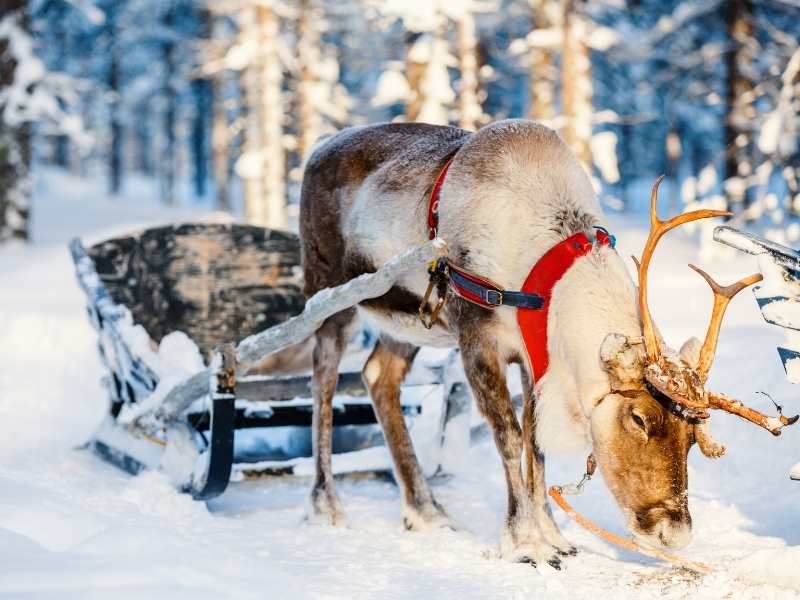
Recommended Reading: 24 Best Books About Elephants You Have to Read
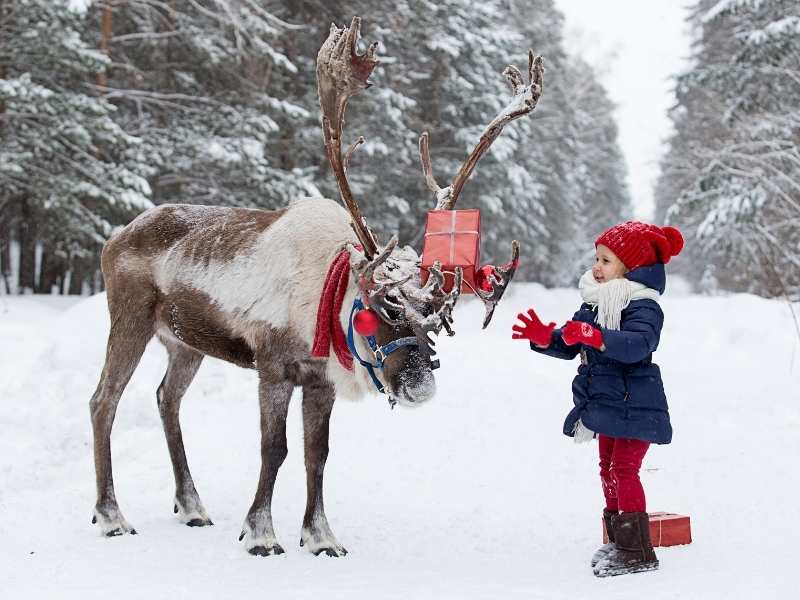
3)From my cycling experience across Finland, I learned that while they are not afraid of cars, they are scared of bikes! As soon as they would see me coming, they would stare for about 2 seconds, then make a mad dash for the woods.
Perhaps, I looked like a giant predator?
Facts About Santa’s Reindeer
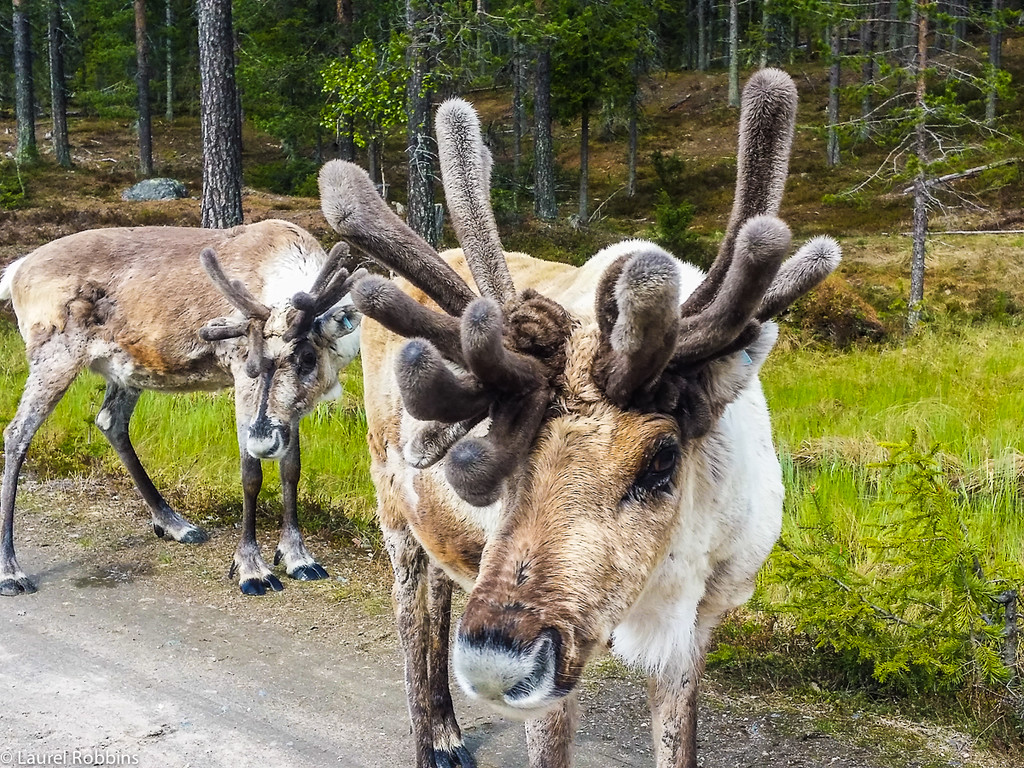
4)Santa’s reindeer are either young males or females. Older males have already lost their large antlers by the time Christmas comes around!
5) Never estimate the power of poetry! They first became associated with pulling Santa’s sleigh until the poem A Night Before Christmas, written by Clement Clarke Moore in 1823!
6)Santa’s eight reindeer originally had all Dutch names. Two of them were changed to German. You probably know Dunder and Blixern better as Donner and Blitzen. In English, they translate to Thunder and Lightening.
7) Santa’s reindeer are most likely a Svalbard subspecies. They’re the smallest of all reindeer. You’ll only find them on the Svalbard Islands in Norway!
Related Reading: 58 Books That Wildlife Lovers Will Enjoy
Facts About Reindeer Calves
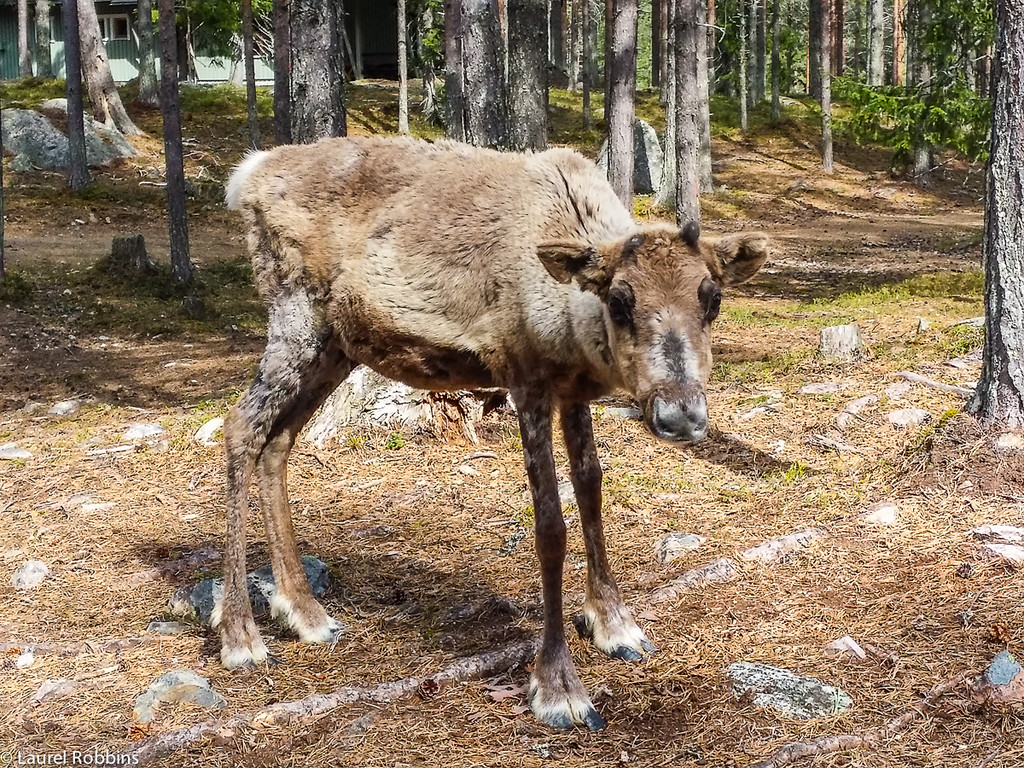
8) Calves learn to stand up and walk within minutes of being born. Several hours later, they can run up to speeds of 75 km per hour! This adaptation is necessary to avoid predators, like wolves, wolverines or even bears!
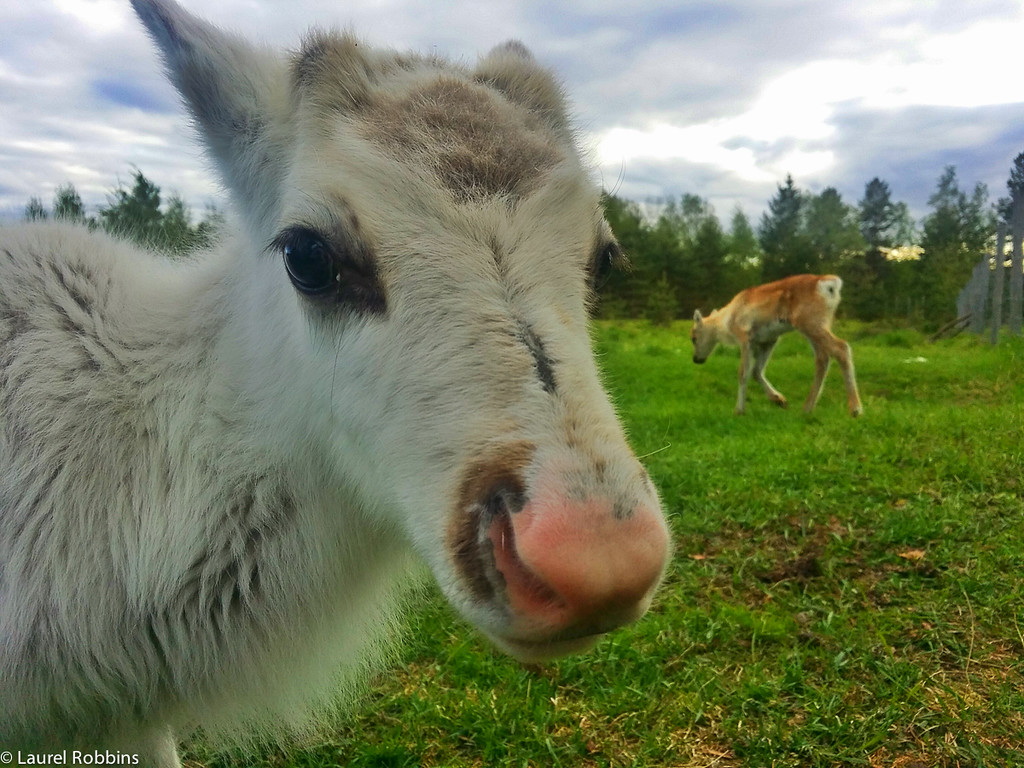
9)Their births are highly synchronized. Almost all of them are born within the same 10-day period in June.
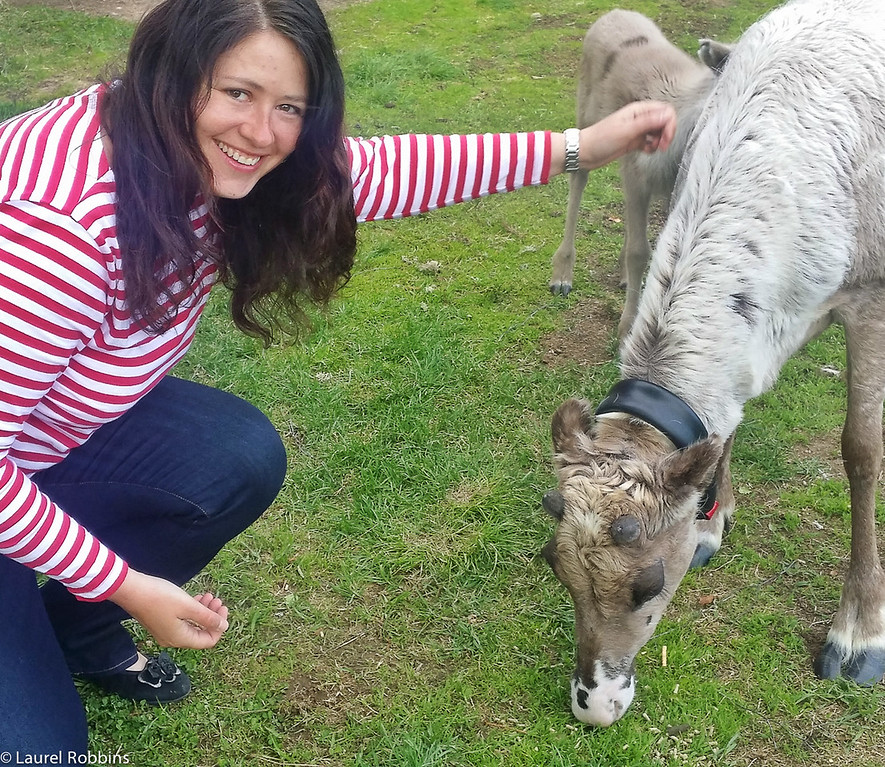
Recommended Reading: The Best Bikepacking Panniers of 2021: What you Need to Know
Facts About Reindeer Farming in Finland
10) Reindeer farmers are sexy! The three that I met all convinced their now wives to move from larger cities in southern Finland to join them in remote Lapland for an entirely different way of life.
11) It is hard work. All three of the herders I spoke with offered sleigh rides in winter as a way to top up their income. This, in itself, isn’t easy.
It can take an animal anywhere from 3 to 7 years to learn to pull a sleigh. It’s not that they are stupid; they’re very stubborn. Pulling a sleigh is hard work that they would rather (smartly, in my opinion) avoid.
12) There are no wild reindeer in Finnish Lapland. All of them belong to someone. Fortunately, they are free to roam on vast swathes of land.
13) Not just anyone can get into this profession. If it hasn’t been passed on to you by your family, it’s complicated. You must be an EU citizen.
You must also be a permanent resident of the district you are applying for. Finally, you have to be approved by the reindeer herding district for the area where you live.
14) It plays an essential role in carrying on the traditions of the Sámi culture. Approximately 1000 Sámi are reindeer herders in Finland.
15) It’s very likely when you visit a park that at least one reindeer will be named Rudolph.
16) There are quite a few places to get close to these incredible animals in Lapland. I especially enjoyed my visit to Salla Reindeer Park.
17) It’s a popular meat in Scandinavia, but it’s also expensive. I found it very tasty, especially Poronkäristys, a reindeer dish surrounded by mashed potatoes. It’s considered to be healthier than beef.
Albino Reindeer
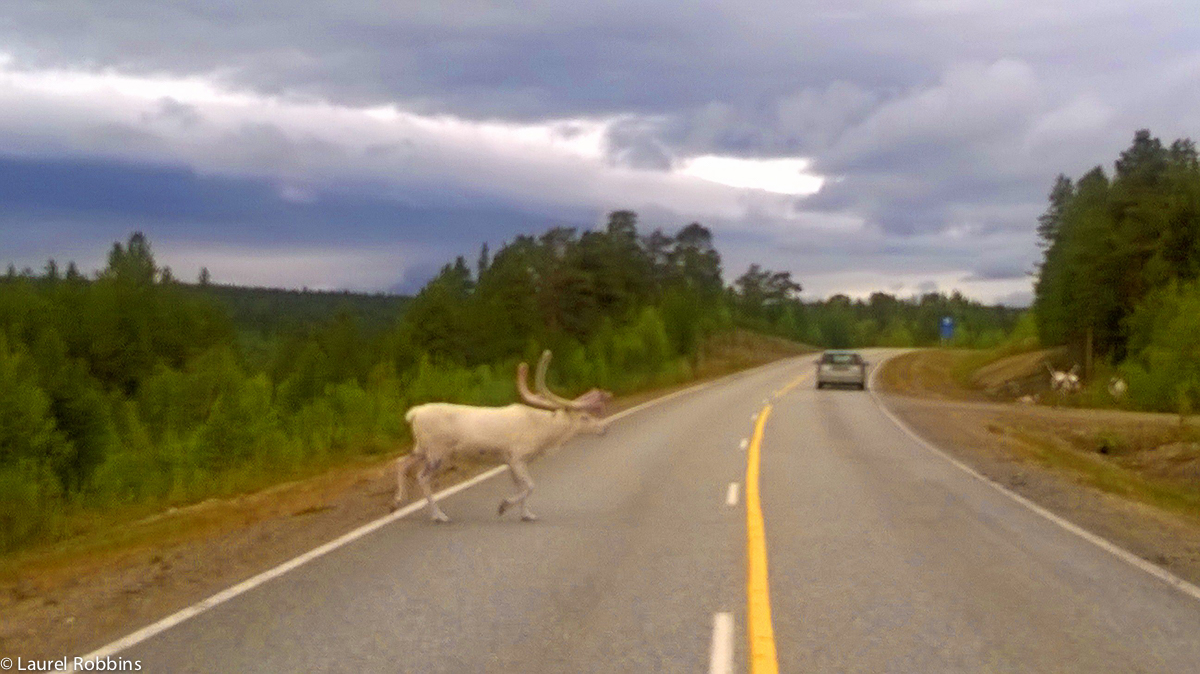
18) True albino reindeer are very rare. I was fortunate to see this one near Utsjoki in northern Finland.
You can impress your holiday guests with these fun reindeer facts. Which one is your favourite?
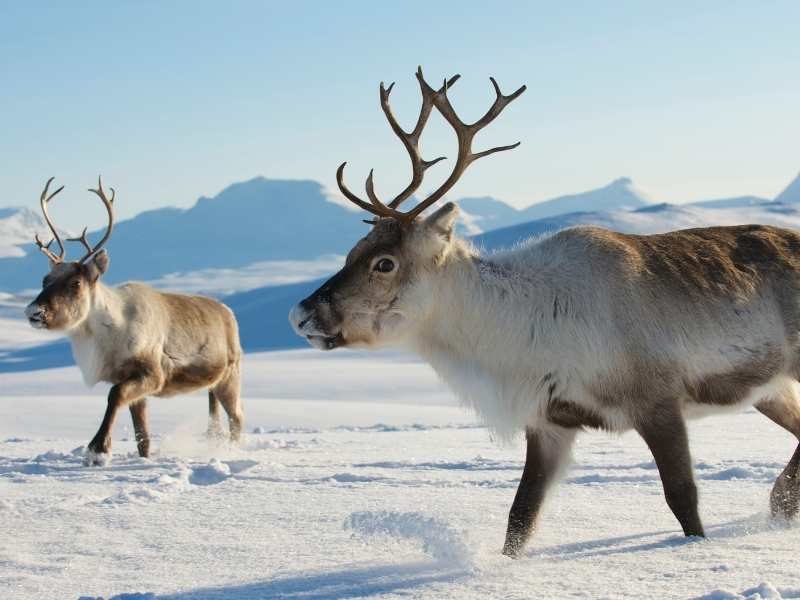
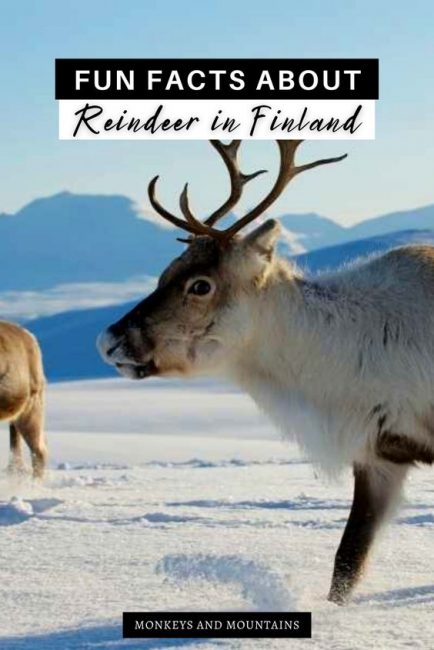
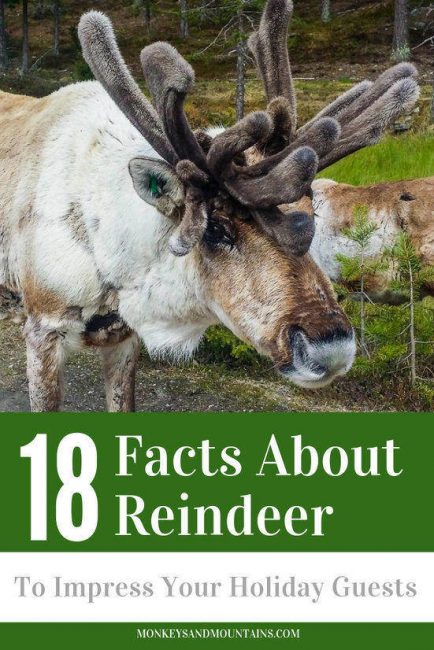
This article was originally published in 2015 and updated and republished in Dec 2020.
[thrive_leads id=’1055181′]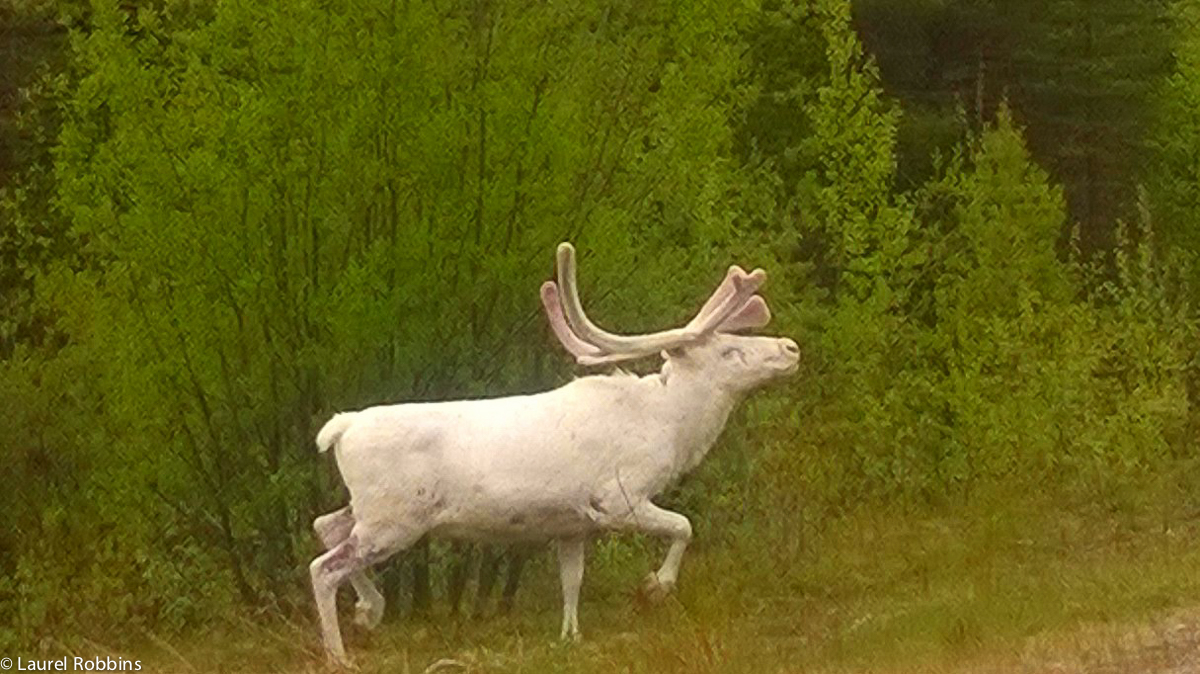
Hey Laurel, what a heartwarming break down about Reindeer. It’s empowering to know a lot more about these lovely animals. I know what I’ll be discussing with my kids next Christmas 🙂 I’m also heading to Finland and Norway this year, I’m hopeful that I will also spot the white reindeer!
And they don’t have red shiny noses. Hehehe! I love their fuzzy antlers…so cute!
Hmm, as someone who had to study German at school, you would think I would be fully aware that the names of two of Santa’s famous reindeer translate to Thunder and Lightning. 😉 Thanks for that. Great pics of a beautiful creature. Happy new year and wishing you a great 2016 ahead.
Julia
@Julia – Ha. I hadn’t thought of it either, until I did research and I speak German as well :). Hope 2016 is a fantastic year for you!
Great info on reindeer! Thanks. Happy New Year!!
@Darlene – Glad you enjoyed it! Happy New Year!
Reindeer breeders are sexy. Must. Move. To Finland! The reason there are strict policies applied to the profession is that it is seen as a traditional occupation strictly linked to the culture of minorities – there have even been cases taken to the UN Human Rights Committee under case 27 of the International Covenant on Civil and Political Rights, such as Ilmari Lansman v. Finland, in which the Committee stated that for a minority it is essential to practice traditional activities to preserve their culture and identity and eventually established that land and its use are important aspects of culture and way of life and should thus be protected.
@Claudia – Yes, you should move and the good news is the odds are in your favour 🙂
Re: the policies. Thanks for the explanation. I think it’s a great thing and I believe that only Samui in Sweden and Norway are allowed to be reindeer farmers.